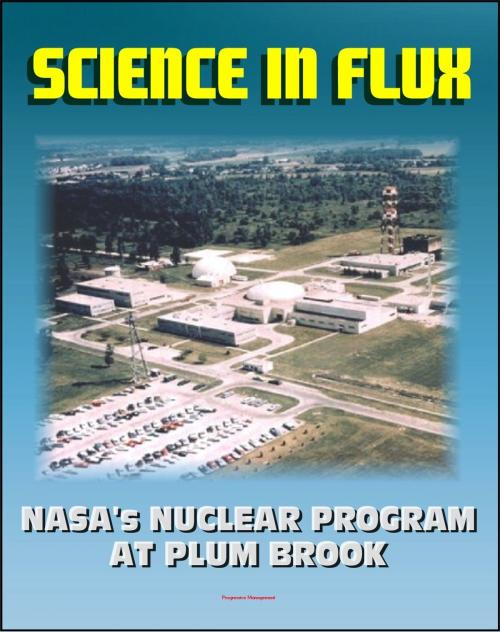Science in Flux: NASA's Nuclear Program at Plum Brook Station, 1955 - 2005 (NASA SP-2006-4317) - Nuclear Rockets, NERVA, Atomic Airplanes, Aircraft Nuclear Propulsion
Nonfiction, Science & Nature, Science, Physics, Nuclear Physics, Astrophysics & Space Science| Author: | Progressive Management | ISBN: | 9781465943422 |
| Publisher: | Progressive Management | Publication: | March 1, 2012 |
| Imprint: | Smashwords Edition | Language: | English |
| Author: | Progressive Management |
| ISBN: | 9781465943422 |
| Publisher: | Progressive Management |
| Publication: | March 1, 2012 |
| Imprint: | Smashwords Edition |
| Language: | English |
This official NASA history document - converted for accurate flowing-text e-book format reproduction - is a dramatic account of the history of NASA's nuclear reactors at the Plum Brook Station in Sandusky, Ohio. The book details the origin of the facility and its work supporting efforts to build a nuclear-powered aircraft and nuclear rockets. The author describes the station as a "nuclear relic from NASA's golden age of space exploration."
Testing and research reactors as scientific tools are more common than most people realize, and their history remains largely untold. There is an important distinction between these two types of reactors. A test reactor is one that operates above the 10-megawatt thermal power range, whereas a research reactor operates between 10 kilowatts and 10 megawatts. Power reactors that generate electricity (and operate at much higher power levels) frequently appear in newspaper headlines and are conspicuous because of their size and potential for disaster, whereas research reactors can be quietly tucked away, even located in the midst of a college campus. Since the completion of the first nuclear research reactor in 1942 at the University of Chicago, 672 facilities have been built throughout the world. The United States was the most prolific research reactor-building nation, with 227 sites, followed by the former Soviet Union with 97. These American reactors were constructed by national laboratories (Argonne, Oak Ridge, Brookhaven, and Los Alamos), universities (North Carolina State, Penn State, MIT, etc.), private industry (Westinghouse, General Electric, etc.), and the military. In 1961, the year that the Plum Brook reactor went "critical" (meaning that it was ready to conduct research with a sustained nuclear reaction), there were 120 nuclear research and test reactors in operation in the United States. At 60 megawatts of power, the Plum Brook facility (along with its 100-kilowatt mock-up research reactor) was the second most powerful test reactor in the country, at the time second only to the Engineering Test Reactor at the National Reactor Testing Station near Idaho Falls, Idaho. Worldwide, only the Soviet Union, Britain, and Canada possessed more powerful test reactors than Plum Brook before it went critical.
In 1955 the National Advisory Committee for Aeronautics (NACA) began designing Plum Brook to help support the goal of a nuclear airplane with a nuclear test reactor to enable engineers to conduct materials testing. The advantages of having nuclear propulsion for an airplane were numerous. Most importantly, in an era before ICBMs and conventionally fueled planes that could circumnavigate the globe, a nuclear airplane promised the first chance for the American military to fly from the United States, drop bombs over the Soviet Union, and then return home. But technical and environmental problems overwhelmed the political and military potential of this program. Although John F. Kennedy helped to inspire the dream of nuclear rockets, ironically he also terminated the research program Plum Brook was originally intended to carry out. Kennedy suspended the nuclear airplane program in March 1961, after over $1 billion and 15 years of work. Less than 3 months before the reactor was to start operation, Plum Brook's main research program lost its political support. The public perceived nuclear airplanes as too costly and dangerous, and chemical fuels began providing many of the advantages once thought possible only with nuclear propulsion. This would be the first time that politics dramatically shaped the future of Plum Brook's scientific work. It would not be the last.
Although the government had terminated the nuclear airplane program, Plum Brook and the research potential of its neutron flux still represented a valuable capability.
This official NASA history document - converted for accurate flowing-text e-book format reproduction - is a dramatic account of the history of NASA's nuclear reactors at the Plum Brook Station in Sandusky, Ohio. The book details the origin of the facility and its work supporting efforts to build a nuclear-powered aircraft and nuclear rockets. The author describes the station as a "nuclear relic from NASA's golden age of space exploration."
Testing and research reactors as scientific tools are more common than most people realize, and their history remains largely untold. There is an important distinction between these two types of reactors. A test reactor is one that operates above the 10-megawatt thermal power range, whereas a research reactor operates between 10 kilowatts and 10 megawatts. Power reactors that generate electricity (and operate at much higher power levels) frequently appear in newspaper headlines and are conspicuous because of their size and potential for disaster, whereas research reactors can be quietly tucked away, even located in the midst of a college campus. Since the completion of the first nuclear research reactor in 1942 at the University of Chicago, 672 facilities have been built throughout the world. The United States was the most prolific research reactor-building nation, with 227 sites, followed by the former Soviet Union with 97. These American reactors were constructed by national laboratories (Argonne, Oak Ridge, Brookhaven, and Los Alamos), universities (North Carolina State, Penn State, MIT, etc.), private industry (Westinghouse, General Electric, etc.), and the military. In 1961, the year that the Plum Brook reactor went "critical" (meaning that it was ready to conduct research with a sustained nuclear reaction), there were 120 nuclear research and test reactors in operation in the United States. At 60 megawatts of power, the Plum Brook facility (along with its 100-kilowatt mock-up research reactor) was the second most powerful test reactor in the country, at the time second only to the Engineering Test Reactor at the National Reactor Testing Station near Idaho Falls, Idaho. Worldwide, only the Soviet Union, Britain, and Canada possessed more powerful test reactors than Plum Brook before it went critical.
In 1955 the National Advisory Committee for Aeronautics (NACA) began designing Plum Brook to help support the goal of a nuclear airplane with a nuclear test reactor to enable engineers to conduct materials testing. The advantages of having nuclear propulsion for an airplane were numerous. Most importantly, in an era before ICBMs and conventionally fueled planes that could circumnavigate the globe, a nuclear airplane promised the first chance for the American military to fly from the United States, drop bombs over the Soviet Union, and then return home. But technical and environmental problems overwhelmed the political and military potential of this program. Although John F. Kennedy helped to inspire the dream of nuclear rockets, ironically he also terminated the research program Plum Brook was originally intended to carry out. Kennedy suspended the nuclear airplane program in March 1961, after over $1 billion and 15 years of work. Less than 3 months before the reactor was to start operation, Plum Brook's main research program lost its political support. The public perceived nuclear airplanes as too costly and dangerous, and chemical fuels began providing many of the advantages once thought possible only with nuclear propulsion. This would be the first time that politics dramatically shaped the future of Plum Brook's scientific work. It would not be the last.
Although the government had terminated the nuclear airplane program, Plum Brook and the research potential of its neutron flux still represented a valuable capability.















